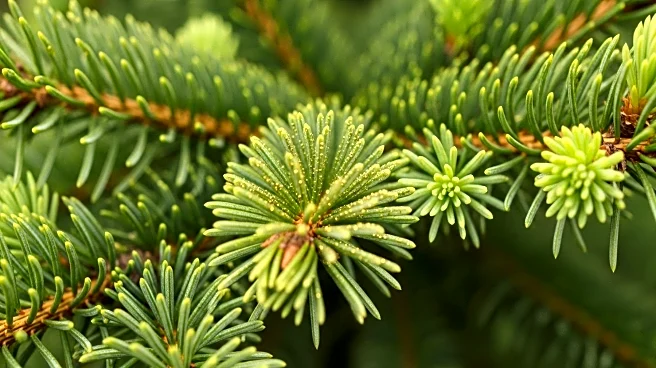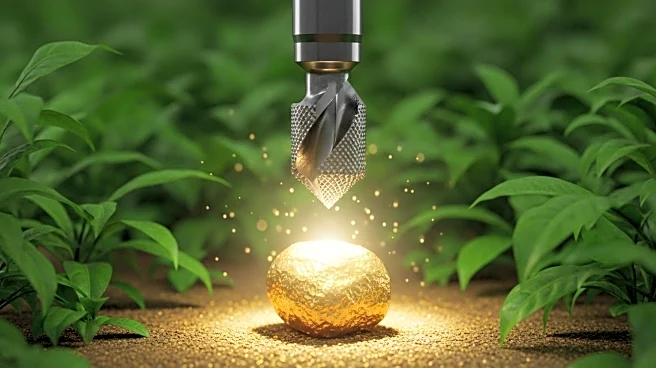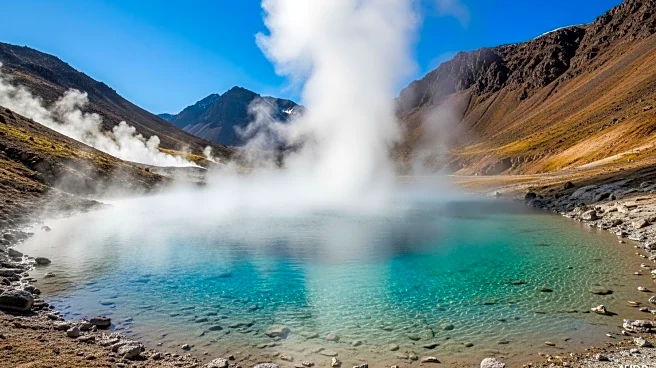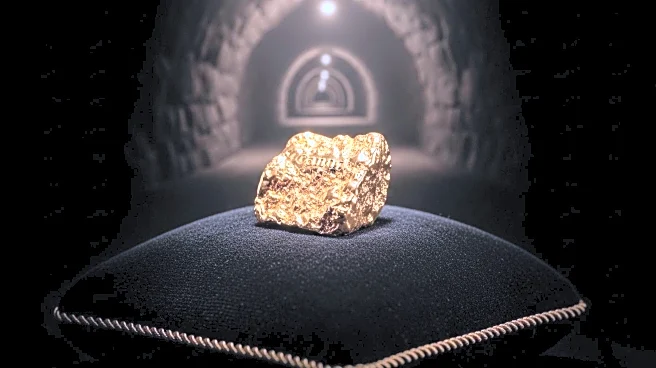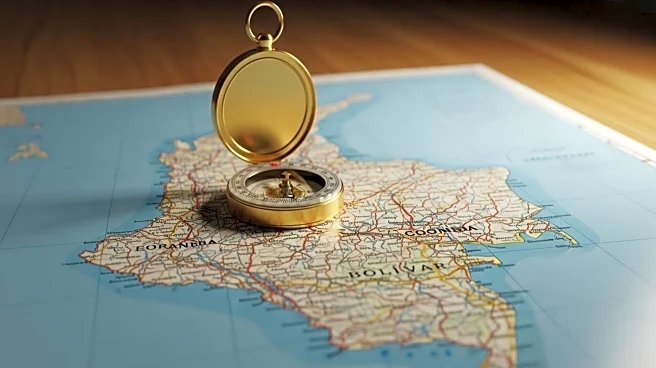What's Happening?
Researchers from the University of Oulu and the Geological Survey of Finland have discovered that Norway spruce trees in northern Finland contain tiny gold nanoparticles within their needles. This phenomenon is facilitated by specific bacteria living inside the needles, which transform soluble gold from the soil into solid particles. The study highlights the role of microbes in shaping geochemistry, suggesting that these bacteria create microenvironments that precipitate dissolved gold into solid nanosized particles. This discovery could lead to more sustainable methods of gold exploration by using plant-based screening techniques, reducing the need for traditional drilling and geochemical surveys.
Why It's Important?
The findings have significant implications for the mining industry, particularly in terms of environmental sustainability. Traditional gold exploration methods often involve extensive drilling, which can be environmentally damaging. By understanding the microbial processes that lead to gold formation in plants, scientists could develop less invasive exploration techniques. This could reduce the environmental impact of mining activities and improve the efficiency of mineral exploration. Additionally, the study suggests potential applications in water purification and environmental remediation, as similar microbe-driven processes could be used to recover metals from water in mining-impacted regions.
What's Next?
Future research will focus on replicating these microbial transformations under controlled conditions and exploring their applicability to other plants and mineral deposits. Scientists aim to track seasonal and groundwater influences on these processes and expand their research to include a wider variety of plants. This could further enhance the understanding of how minerals accumulate in nature and lead to the development of new, sustainable methods for mineral recovery and environmental management.

